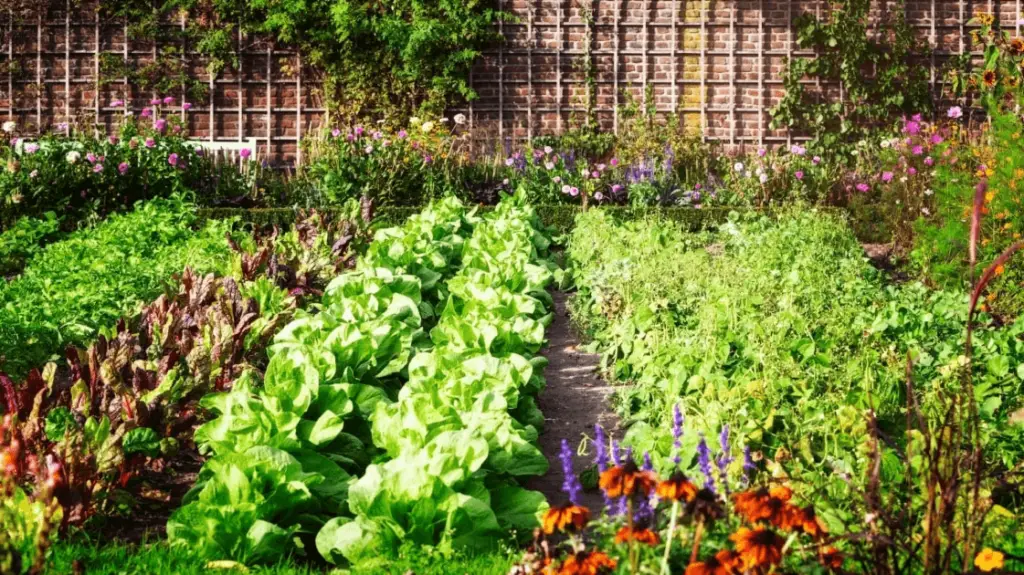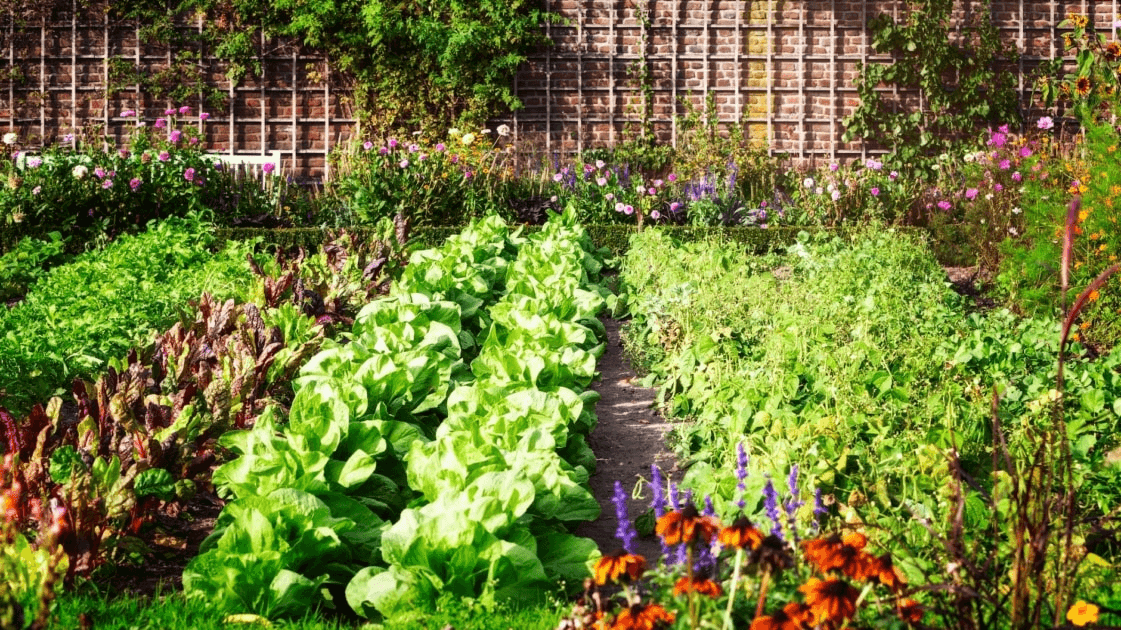Companion planting is a gardening technique where different plants are grown together for mutual benefit. While the concept of companion planting has been around for centuries, it has gained renewed interest in recent years due to the growing interest in organic gardening and sustainable living.
The idea behind companion planting is that certain plants can enhance the growth and health of other plants when they are grown in close proximity. This can be achieved by creating a mutually beneficial relationship between plants, where one plant provides something that the other plant needs, such as nutrients or protection from pests.

One of the most common forms of companion planting involves planting flowers and vegetables together. This approach is not only practical, but also aesthetically pleasing. Here, we’ll take a look at the benefits of companion planting flowers and vegetables together, and offer some tips on how to get started.
Benefits of Companion Planting
#1. Pest Control
One of the most significant benefits of companion planting is pest control. Many insects are naturally repelled by certain plants, and by planting these plants alongside vegetables, you can reduce the risk of insect damage. For example, marigolds are known to repel nematodes, which can be harmful to vegetables such as tomatoes and cucumbers.
#2. Pollination
Another benefit of companion planting is pollination. Bees and other pollinators are essential for the growth of many vegetables and fruits. By planting flowers that attract these pollinators, you can increase the chances of a successful harvest. Some flowers that are great for attracting bees include lavender, sunflowers, and wildflowers.
#3. Soil Health
Companion planting can also improve soil health. Certain plants have the ability to improve the soil by adding nutrients or breaking up compacted soil. For example, legumes such as beans and peas have nitrogen-fixing bacteria in their roots that can add nitrogen to the soil. This nitrogen can then be used by other plants, such as tomatoes and peppers, to promote healthy growth.
#4. Companion Plants Act as a Trap Crop
In some cases, companion plants can be used as a trap crop to attract pests away from more valuable crops. For example, planting nasturtiums alongside vegetables such as broccoli or cauliflower can attract aphids away from these crops, reducing the risk of damage.
#5. Increased Biodiversity
Companion planting can also increase biodiversity in your garden. By planting a variety of different plants, you can create a diverse ecosystem that is less vulnerable to pests and diseases. Additionally, planting flowers alongside vegetables can attract a variety of wildlife, including birds and butterflies.
#6. Aesthetically Pleasing
Finally, companion planting can be aesthetically pleasing. By planting flowers alongside vegetables, you can create a beautiful garden that is both productive and attractive. Some flowers that work well for companion planting include marigolds, zinnias, and calendula.
How to Plant Flowers and Vegetables Together
Now that you understand the benefits of companion planting, let’s take a look at how to get started.
#1. Choose Your Plants
The first step in companion planting is choosing your plants. Some plants work better together than others, so it’s important to do your research. Some good options for companion planting include:
- Tomatoes and basil
- Carrots and onions
- Cucumbers and marigolds
- Peppers and petunias
- Beans and sunflowers
#2. Determine Your Garden Layout
Once you’ve chosen your plants, it’s time to determine your garden layout. There are several ways to plant flowers and vegetables together. Some options include:
- Interplanting: This involves planting different types of plants together in the same row. For example, you might plant a row of lettuce, followed by a row of marigolds, and then a row of tomatoes.
- Companion Planting Beds: Another option is to create a dedicated companion planting bed. This involves planting flowers and vegetables together in a specific area of your garden. This method allows for more flexibility in terms of plant placement and can be easier to manage than interplanting.
- Three Sisters Garden: The Three Sisters Garden is a traditional Native American companion planting technique that involves planting corn, beans, and squash together. The corn provides support for the beans, the beans add nitrogen to the soil, and the squash acts as a living mulch, helping to retain moisture and suppress weeds.
#3. Consider Your Soil
Before planting, it’s important to consider the soil in your garden. Different plants have different soil requirements, so it’s important to choose plants that are compatible with the soil in your garden. Additionally, it’s important to ensure that your soil is healthy and well-draining, as this will help your plants to grow strong and healthy.
#4. Plant Carefully
When planting, be sure to plant your flowers and vegetables at the appropriate depth and spacing. Additionally, it’s important to water your plants regularly and provide them with the appropriate nutrients. Some plants may require additional support, such as stakes or trellises, so be sure to provide this as needed.
#5. Monitor for Pests and Diseases
Even with companion planting, it’s still possible for pests and diseases to affect your plants. Be sure to monitor your garden regularly for signs of damage and take action as needed. This may involve using natural pest control methods, such as introducing beneficial insects or using companion plants as trap crops.
Companion planting is a simple yet effective way to promote healthy growth and increase productivity in your garden. By planting flowers and vegetables together, you can create a diverse and beautiful garden that is both productive and aesthetically pleasing. Whether you’re a seasoned gardener or just starting out, companion planting is a technique that is worth exploring. With a little research and planning, you can create a garden that is both healthy and beautiful.



















